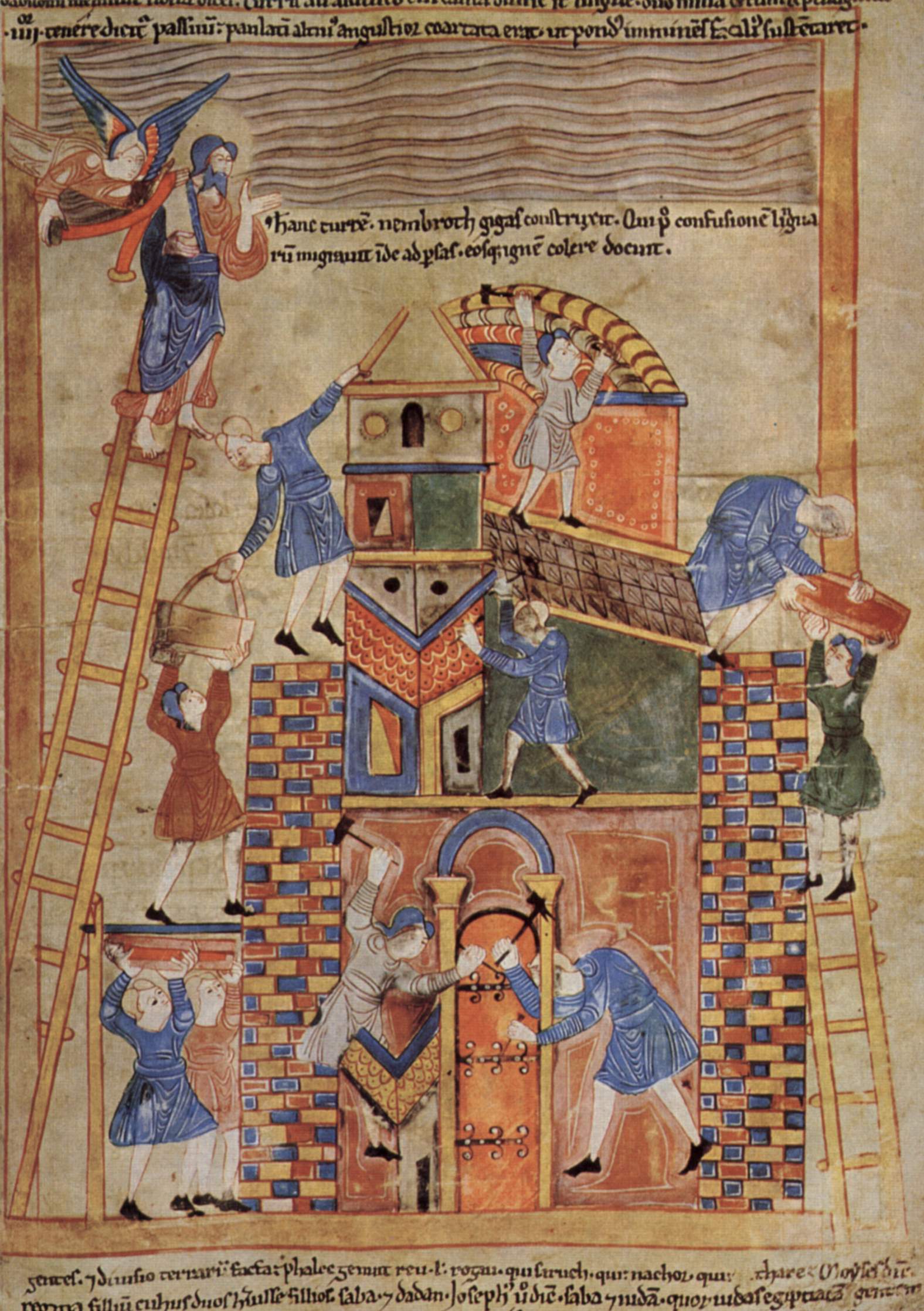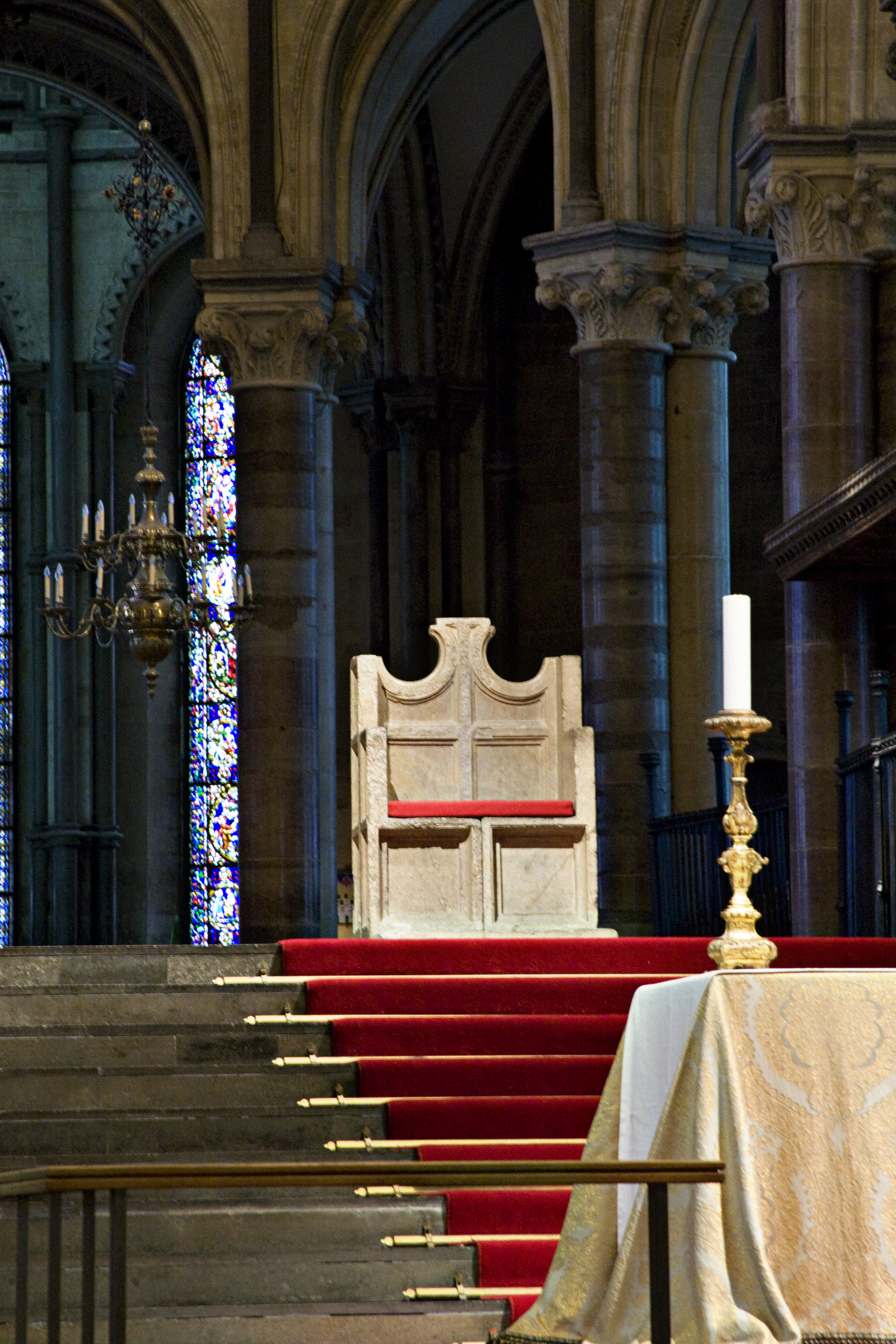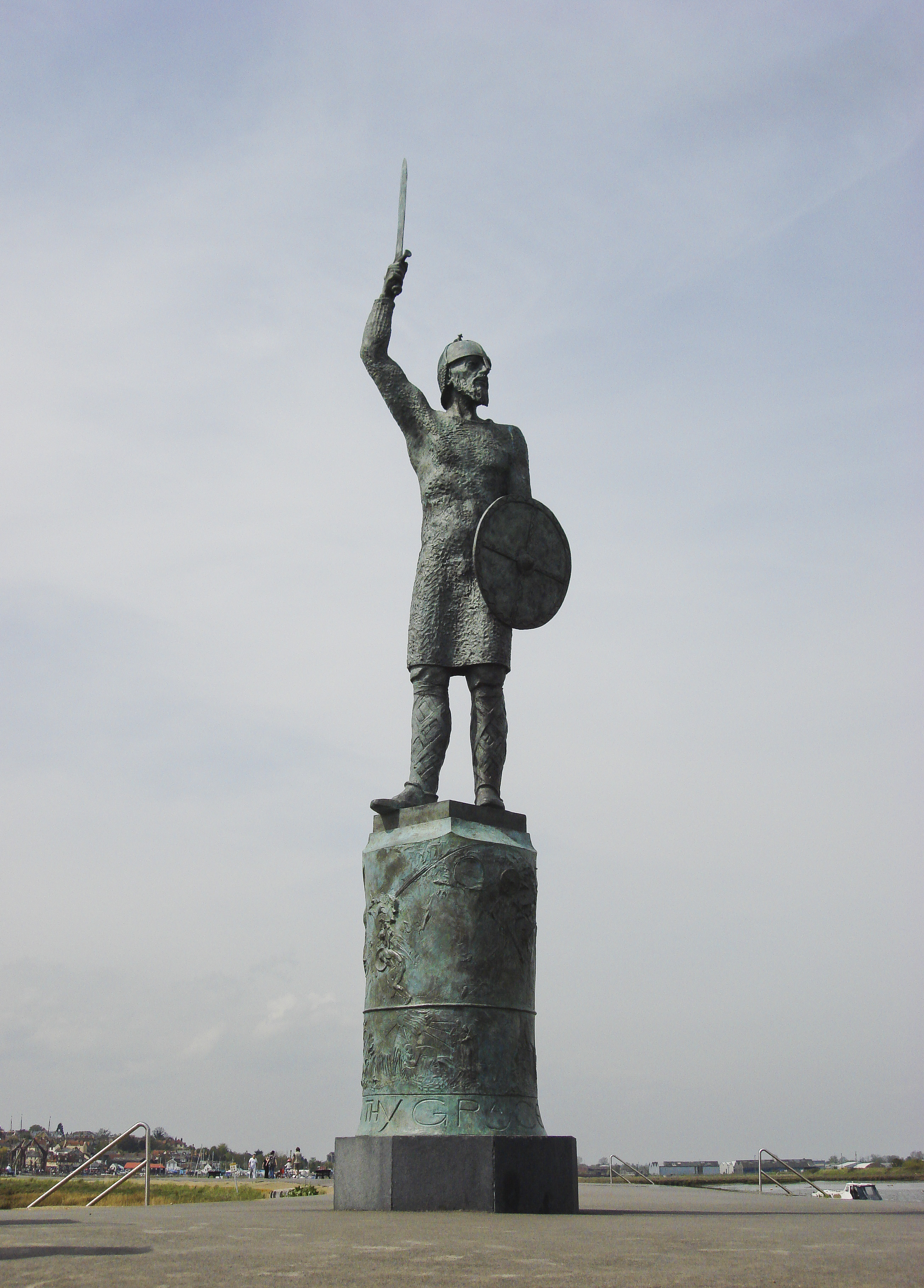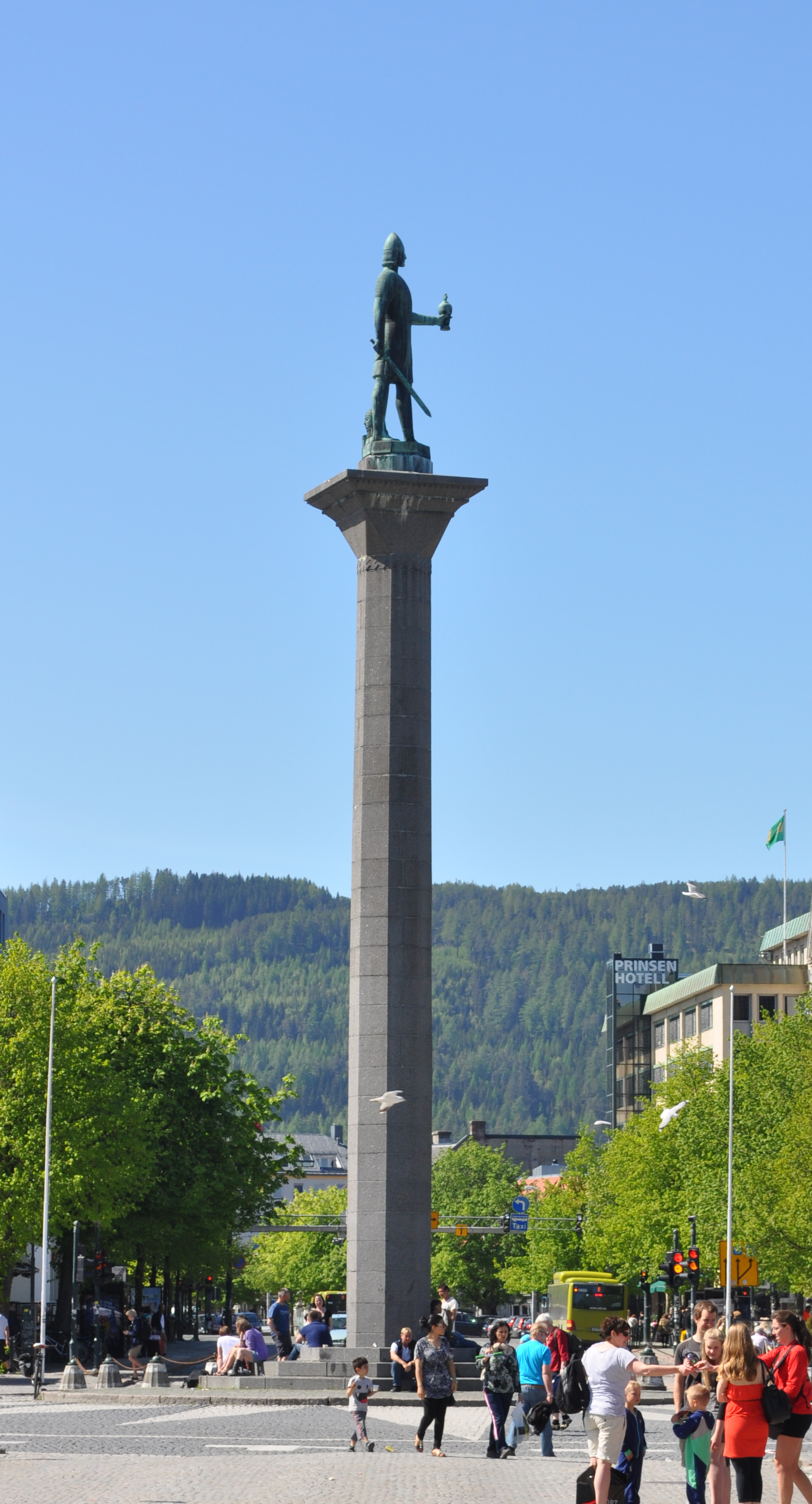|
Sigeric The Serious
Sigeric (died 28 October 994) was the Archbishop of Canterbury from 990 to 994. Educated at Glastonbury Abbey, he became a monk there before becoming an abbot and then Bishop of Ramsbury (ancient), Bishop of Ramsbury before his elevation to the archbishopric. An account of his pilgrimage to Rome in 990 survives and is an important source for historians studying Rome during his lifetime. While archbishop, Sigeric was faced with Viking invasions of England, Viking invasions, and supported giving money to the invaders to deter their attacks. He also advised King Æthelred the Unready on religious foundations. Sigeric died in 994 and his will gave his books to Canterbury. Early career Sigeric was educated at Glastonbury Abbey, where he took holy orders. He was elected Abbot of St. Augustine's Abbey, Canterbury, St Augustine's in about 975 to 990,Knowles, et al. ''Heads of Religious Houses'' pp. 35, 243 and consecrated by Dunstan, Archbishop Dunstan as Bishop of Ramsbury (ancient) ... [...More Info...] [...Related Items...] OR: [Wikipedia] [Google] [Baidu] |
Archbishop Of Canterbury
The archbishop of Canterbury is the senior bishop and a principal leader of the Church of England, the Primus inter pares, ceremonial head of the worldwide Anglican Communion and the bishop of the diocese of Canterbury. The first archbishop was Augustine of Canterbury, the "Apostle to the English", who was sent to England by Pope Gregory the Great and arrived in 597. The position is currently vacant following the resignation of Justin Welby, the List of Archbishops of Canterbury, 105th archbishop, effective 7 January 2025.Orders in Council, 18 December 2024, page 42 During the vacancy the official functions of the office have been delegated primarily to the archbishop of York, Stephen Cottrell, with some also undertaken by the bishop of London, Sarah Mullally, and the bishop of Dover, Rose Hudson-Wilkin. From Augustine until William Warham, the archbishops of Canterbury were in full communion with the Catholic Church and usually received the pallium from the pope. During the ... [...More Info...] [...Related Items...] OR: [Wikipedia] [Google] [Baidu] |
Via Francigena
The Via Francigena (), also known as Francisca or Romea, is an ancient road and Christian pilgrimage, pilgrimage route running from the City status in the United Kingdom#Cathedral towns, cathedral city of Canterbury in England, through France and Switzerland, to Rome and then to Apulia, Italy, where there were ports of embarkation for the Holy Land. It was known in Italy as the Via Francigena ("the road that comes from France") or the Via Romea Francigena ("the road to Rome that comes from France"). In Middle Ages, medieval times it was an important road and pilgrimage route for those wishing to visit the Holy See and the tombs of the Apostles in the New Testament, apostles Saint Peter, Peter and Paul the Apostle, Paul. History of the pilgrimage to Rome In the Middle Ages, Via Francigena was the major pilgrimage route to Rome from the north. The route was first documented as the "Lombard Way", and was first called the ''Iter Francorum'' (the "Frankish Route") in the ''Itinerari ... [...More Info...] [...Related Items...] OR: [Wikipedia] [Google] [Baidu] |
Cholsey Abbey
Cholsey Abbey was an Anglo-Saxon abbey in Cholsey in what is now the English county of Oxfordshire (formerly Berkshire), which was founded in the mid-990s by King Æthelred the Unready on land which he had acquired from his mother, Ælfthryth. It was dedicated to Æthelred's half-brother, Edward the Martyr, and its first abbot was Germanus. It may have been sacked by the Vikings in 1006, and by the time of the Norman Conquest The Norman Conquest (or the Conquest) was the 11th-century invasion and occupation of England by an army made up of thousands of Normans, Norman, French people, French, Flemish people, Flemish, and Bretons, Breton troops, all led by the Du ... in 1066 it had disappeared. References See alsoBritish History Online: Victoria County History of Berkshire: The Abbey of Reading(mentioning Cholsey Abbey) 986 establishments Anglo-Saxon monastic houses Christian monasteries established in the 10th century 1006 disestablishments in Europe Monast ... [...More Info...] [...Related Items...] OR: [Wikipedia] [Google] [Baidu] |
Ælfric Of Eynsham
Ælfric of Eynsham (; ; ) was an English abbot and a student of Æthelwold of Winchester, and a consummate, prolific writer in Old English of hagiography, homilies, biblical commentaries, and other genres. He is also known variously as ''Ælfric the Grammarian'' (''Alfricus Grammaticus''), ''Ælfric of Cerne'', and ''Ælfric the Homilist''. In the view of Peter Hunter Blair, he was "a man comparable both in the quantity of his writings and in the quality of his mind even with Bede himself." According to Claudio Leonardi, he "represented the highest pinnacle of Benedictine reform and Anglo-Saxon literature". Life and works Ælfric was educated in the Benedictine Old Minster at Winchester under Saint Æthelwold, who was bishop there from 963 to 984. Æthelwold had carried on the tradition of Dunstan in his government of the abbey of Abingdon, then in Berkshire, and at Winchester he continued his strenuous support for the English Benedictine Reform. He seems to ha ... [...More Info...] [...Related Items...] OR: [Wikipedia] [Google] [Baidu] |
Winchester
Winchester (, ) is a City status in the United Kingdom, cathedral city in Hampshire, England. The city lies at the heart of the wider City of Winchester, a local government Districts of England, district, at the western end of the South Downs National Park, on the River Itchen, Hampshire, River Itchen. It is south-west of London and from Southampton, its nearest city. At the 2021 census, the built-up area of Winchester had a population of 48,478. The wider City of Winchester district includes towns such as New Alresford, Alresford and Bishop's Waltham and had a population of 127,439 in 2021. Winchester is the county town of Hampshire and contains the head offices of Hampshire County Council. Winchester developed from the Roman Britain, Roman town of Venta Belgarum, which in turn developed from an Iron Age ''oppidum''. Winchester was one of if not the most important cities in England until the Norman Conquest in the eleventh century. It now has become one of the most expensive ... [...More Info...] [...Related Items...] OR: [Wikipedia] [Google] [Baidu] |
Old Minster
The Old Minster was the Anglo-Saxon cathedral for the English diocese of Wessex and then Winchester from 660 to 1093. It stood on a site immediately north of and partially beneath its successor, Winchester Cathedral. Some sources say that the minster was constructed in 648 for King Cenwalh of Wessex as the church of St Peter and St Paul, though such sources are late and unreliable. More likely it was built to be the cathedral for the first bishop of Winchester, the Saxon Bishop Wine, when the West Saxon bishopric was transferred from Dorchester-on-Thames. It was enlarged and redecorated over the years and Saint Swithun was buried outside it in 862. By the 10th century, the Minster was the priory church of St. Swithun's Priory, a community of monks living under the rule of St Benedict. In 901, the New Minster was built next to it, so close that the singing of the monks inside each is said to have become hopelessly intermingled with the other. Saint Æthelwold of Winchester ... [...More Info...] [...Related Items...] OR: [Wikipedia] [Google] [Baidu] |
Ealdred (bishop Of Cornwall)
Ealdred was a medieval Bishop of Cornwall. He was consecrated between 981 and a period between 988 and 990. He died between 1002 and 1009.Fryde, et al. ''Handbook of British Chronology'' p. 215 In 994, King Æthelred of England removed the diocese of Cornwall from the supervision of the bishop of Crediton.Barlow ''English Church 100-1066'' p. 212 The diploma granting the liberty of the diocese declares that it was written by Sigeric, archbishop of Canterbury Canterbury (, ) is a City status in the United Kingdom, city and UNESCO World Heritage Site, in the county of Kent, England; it was a county borough until 1974. It lies on the River Stour, Kent, River Stour. The city has a mild oceanic climat ..., although it is unlikely that it was actually written by his own hand.Chaplais "Royal Anglo-Saxon 'Chancery'" ''Studies in Medieval History'' pp. 44-45 Citations References * * * External links * Bishops of Cornwall 10th-century English bishops 11th-ce ... [...More Info...] [...Related Items...] OR: [Wikipedia] [Google] [Baidu] |
Canterbury Cathedral
Canterbury Cathedral is the cathedral of the archbishop of Canterbury, the spiritual leader of the Church of England and symbolic leader of the worldwide Anglican Communion. Located in Canterbury, Kent, it is one of the oldest Christianity, Christian structures in England and forms part of a World Heritage Site. Its formal title is the Cathedral and Metropolitical Church of Christ, Canterbury. Founded in 597, the cathedral was completely rebuilt between 1070 and 1077. The east end was greatly enlarged at the beginning of the 12th century, and largely rebuilt in the Gothic style following a fire in 1174, with significant eastward extensions to accommodate the flow of pilgrims visiting the shrine of Thomas Becket, the archbishop who was murdered in the cathedral in 1170. The Norman nave and transepts survived until the late 14th century, when they were demolished to make way for the present structures. Before the English Reformation, the cathedral was part of a Benedictine monas ... [...More Info...] [...Related Items...] OR: [Wikipedia] [Google] [Baidu] |
Battle Of Maldon
The Battle of Maldon took place on 10 or 11 August 991 AD near Maldon, Essex, Maldon beside the River Blackwater, Essex, River Blackwater in Essex, England, during the reign of Æthelred the Unready. Earl Byrhtnoth and his thegns led the English people, English against a Viking invasion. The battle ended in an Anglo-Saxon defeat. After the battle Sigeric (archbishop), Archbishop Sigeric of Canterbury and the aldermen of the south-western provinces advised King Æthelred to buy off the Vikings rather than continue the armed struggle. The result was a payment of Danegeld of 10,000 Roman pounds (3,300 kg) of silver (approx £1.8M at 2022 prices). An account of the battle, embellished with many speeches attributed to the warriors and with other details, is related in an Old English poem which is usually named ''The Battle of Maldon''. A modern embroidery created for the millennium celebration in 1991 and, in part, depicting the battle, can be seen at the Maeldune Centre in ... [...More Info...] [...Related Items...] OR: [Wikipedia] [Google] [Baidu] |
Olaf Tryggvason
Olaf Tryggvason (960s – 9 September 1000) was King of Norway from 995 to 1000. He was the son of Tryggvi Olafsson, king of Viken ( Vingulmark, and Rånrike), and, according to later sagas, the great-grandson of Harald Fairhair, first King of Norway. He is numbered as Olaf I. Olaf was important in the conversion of the Norse to Christianity, but he did so forcibly within his own kingdom. He is said to have built the first Christian church in Norway in 995, and to have founded the city of Trondheim in 997. A statue dedicated to him is located in the city's central plaza. Historical information on Olaf is sparse. He is mentioned in some contemporary English sources, and some skaldic poems. The oldest narrative source mentioning him briefly is Adam of Bremen's '' Gesta Hammaburgensis ecclesiae pontificum'' of ''circa'' 1070. In the 1190s, two Latin versions of ''" Óláfs saga Tryggvasonar"'' were written in Iceland, by Oddr Snorrason and Gunnlaugr Leifsson – these are ... [...More Info...] [...Related Items...] OR: [Wikipedia] [Google] [Baidu] |
Pope John XV
Pope John XV (, ; died March 996) was the bishop of Rome and ruler of the Papal States from August 985 until his death. A Roman by birth, he was the first pope who canonized a saint. The origins of the investiture controversy stem from John XV's pontificate, when the dispute about the deposition of Archbishop Arnulf of Reims soured the relationship between the Capetian kings of France and the Holy See. Early life John XV was the son of Leo, a Roman presbyter. Before he became pope in August 985, John was cardinal-priest of St. Vitalis. Pontificate John XV's venality and nepotism allegedly made him very unpopular with the citizens of Rome. However, Joseph Brusher finds this unproven, as John XV had little authority in Rome at that time. Crescentius II, patrician of Rome, significantly hampered the pope's influence, but the presence of Empress Theophanu in Rome from 989 to 991 restrained Crescentius' ambition. John was a patron and protector of the reforming monks of Cluny ... [...More Info...] [...Related Items...] OR: [Wikipedia] [Google] [Baidu] |






